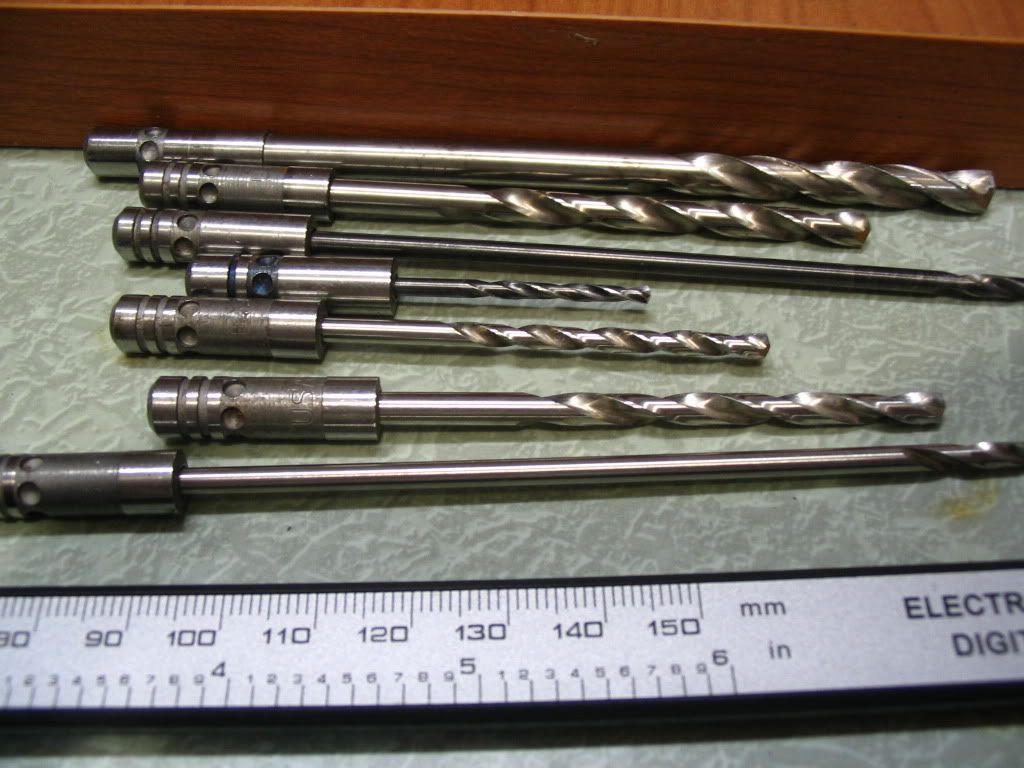I picked up these items from my local Restore branch in Nanaimo, Canada, for CD$ 15.
Being ignorant of what exactly they are, I turn to the forum members. Some of them look like reamers with a stepped point, whereas the others are obviously drills.
They all are in very good shape, whrere only a couple need touching up. I am confounded by the chucking ends - how can I use them in a home workshop.
The reamers consist of the following sizes : 5/32 (1), 3/16 (7), 7/32 (1) and 1/4 (4).
The drills consist of the following sizes : 5/32 (1), 3/16 (1), 5/64 (1), 7/64 (3), and !/4 (1).
Can I have some enlightenment, please?
Piecat.





Being ignorant of what exactly they are, I turn to the forum members. Some of them look like reamers with a stepped point, whereas the others are obviously drills.
They all are in very good shape, whrere only a couple need touching up. I am confounded by the chucking ends - how can I use them in a home workshop.
The reamers consist of the following sizes : 5/32 (1), 3/16 (7), 7/32 (1) and 1/4 (4).
The drills consist of the following sizes : 5/32 (1), 3/16 (1), 5/64 (1), 7/64 (3), and !/4 (1).
Can I have some enlightenment, please?
Piecat.








































































